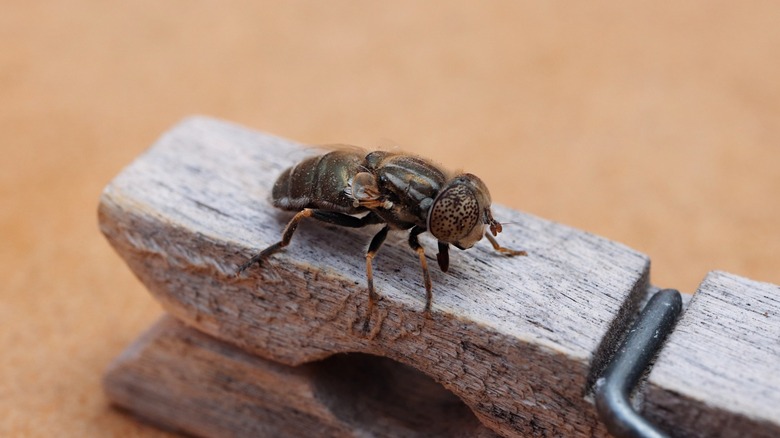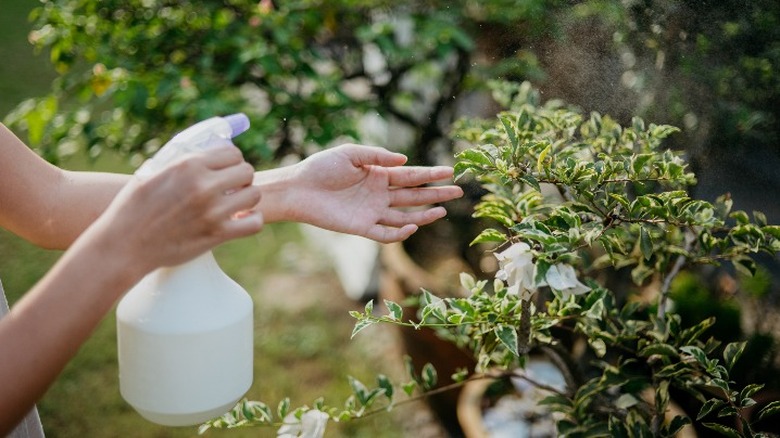Why You'll Want A Clothespin Handy When Dealing With Pests In The Garden
While strolling through your garden, you might be alarmed to discover pests nibbling on your plants. Your first instinct might be to simply shoo them away, but this is only a temporary fix as they're likely to return. An interesting tip circulating TikTok, such as this TikTok video from @_theherbalyogi, is to keep a clothespin handy. This simple tool is surprisingly effective for gently removing these unwelcome visitors from your plants without causing any damage.
Once you've caught the pest, you have several options: relocate it to a different area, offer it as a meal to insect-eating pets you might have, like birds or salamanders, or place it in a container with soapy water. While a clothespin is effective for catching slower-moving pests like caterpillars and some bugs, it might not be the best tool for capturing pests that are too quick or small. These more agile pests require a different approach. To add to that, using a clothespin demands a higher level of precision, which can be challenging for fast-moving targets.
A better alternative to a clothespin
For gardens where bugs aren't a common sight but still need to be caught occasionally, exploring other tools can be beneficial. When dealing with small, agile insects, a tool like pliers might be more suitable. Pliers can offer a quicker and more secure grip. Bug tongs are another innovative option. These are similar in appearance to regular tongs but feature plastic scoopers at the tips, specifically designed for safely capturing insects.
However, turning to insecticides might be necessary if your garden faces a more persistent pest problem. Fortunately, there are numerous non-chemical insecticides available that can be effective. For instance, neem oil can banish pesky grubs from your lawn.
You can also use cayenne pepper to deal with pests in your garden; simply sprinkle it around the garden or make your own cayenne spray repellant by mixing two tablespoons of cayenne pepper with a few drops of dishwashing liquid. Add this mixture to a gallon of water; let it sit overnight, and begin spritzing it on your plants!

